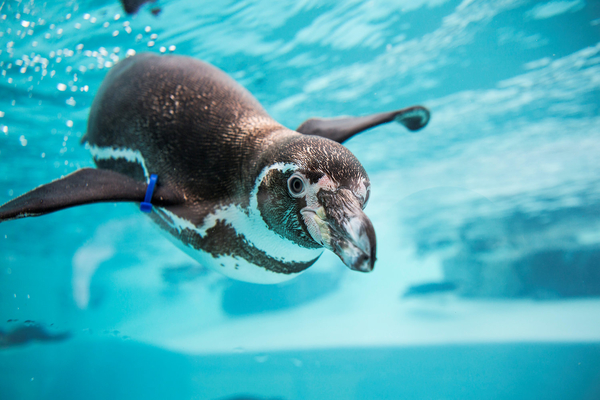

Who doesn’t love a penguin? At Penguin Coast we’ve got p-p-plenty.
At Penguin Coast, you really are up close to our penguins. Low fencing around the nesting areas means you feel part of their home. And a large covered underwater viewing area lets you interact with them through the glass – and because it’s undercover, you can enjoy the penguins even if it’s raining.
We have a group of Humboldt penguins, an endangered species from South America and a group of Macaroni penguins. Penguin Coast is part of a breeding programme, which is why the enclosure has its own penguin nursery. Here you can see our chicks learn to swim and feed themselves. We’ve successfully bred from our Humboldt penguins, each season adding many chicks to the waddle – that’s the name for a group of penguins.
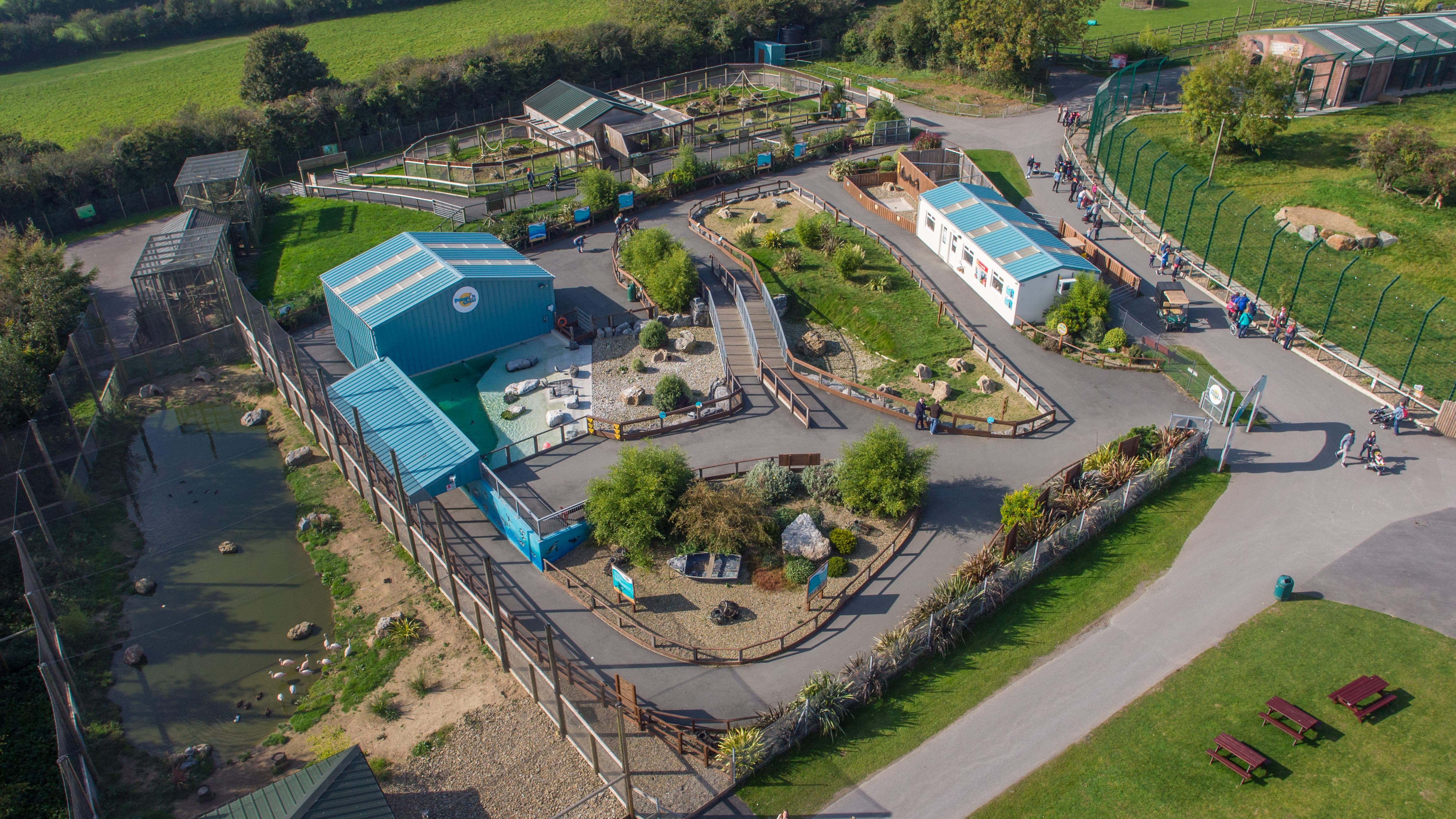
We’ve designed the enclosure to be very like the penguins’ natural home. It’s the best breeding environment for them. Penguin Coast has a pebble beach, which is good for penguins’ feet and prevents ‘bumblefoot’, a common complaint in penguins. And the penguin pool’s pump house ensures the water is as close to seawater as possible, by adding salt and removing any waste – including the penguin’s poop!
We have some real characters at Penguin Coast. Look out for Slippy the Humboldt who has a limp and our Macaroni Mafia including Tony the Don, Frankie the Fish and YoYo our hand reared Mac, he’s super friendly. Plus, all our penguins have coloured bands on their flippers to help us identify them. The penguins can’t feel the bands, and they help our keepers look after each penguin properly.
In the early part of the year, our penguins start breeding. During this time, there are fewer penguins in the pool as they waddle off to their nest boxes.
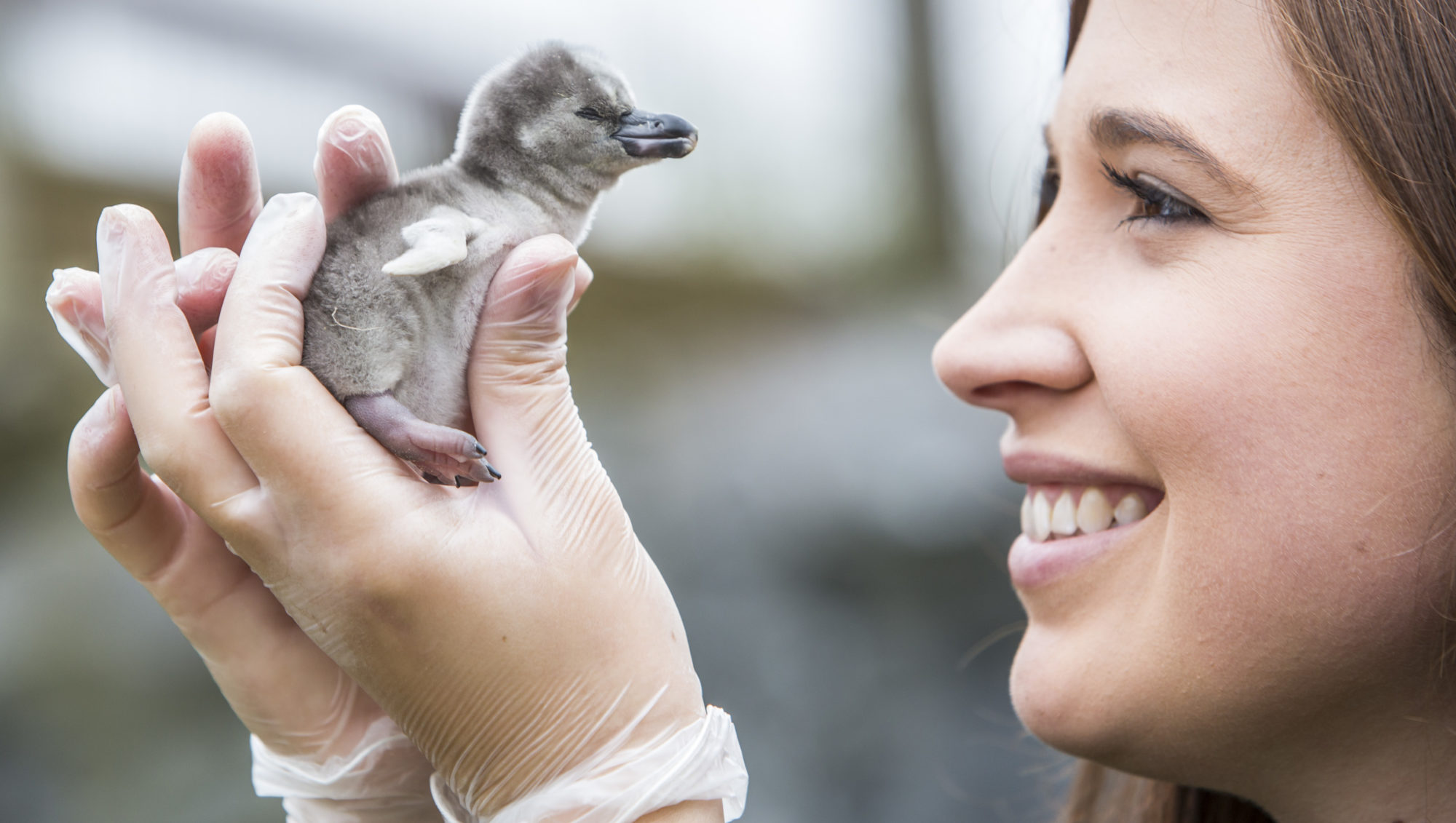
Once a year, usually in the summer, our penguins lose their feathers. But don’t p-p-panic, there’s nothing wrong. Over time, a penguin’s feathers lose their natural waterproofing, so they need to grow lovely new ones. This is hard work for them, so they eat extra fish to make sure they have lots of energy. Sometimes this makes them look a bit overweight – but when they’re ‘in moult’ (losing their feathers), they hardly eat, and just laze around saving their energy.
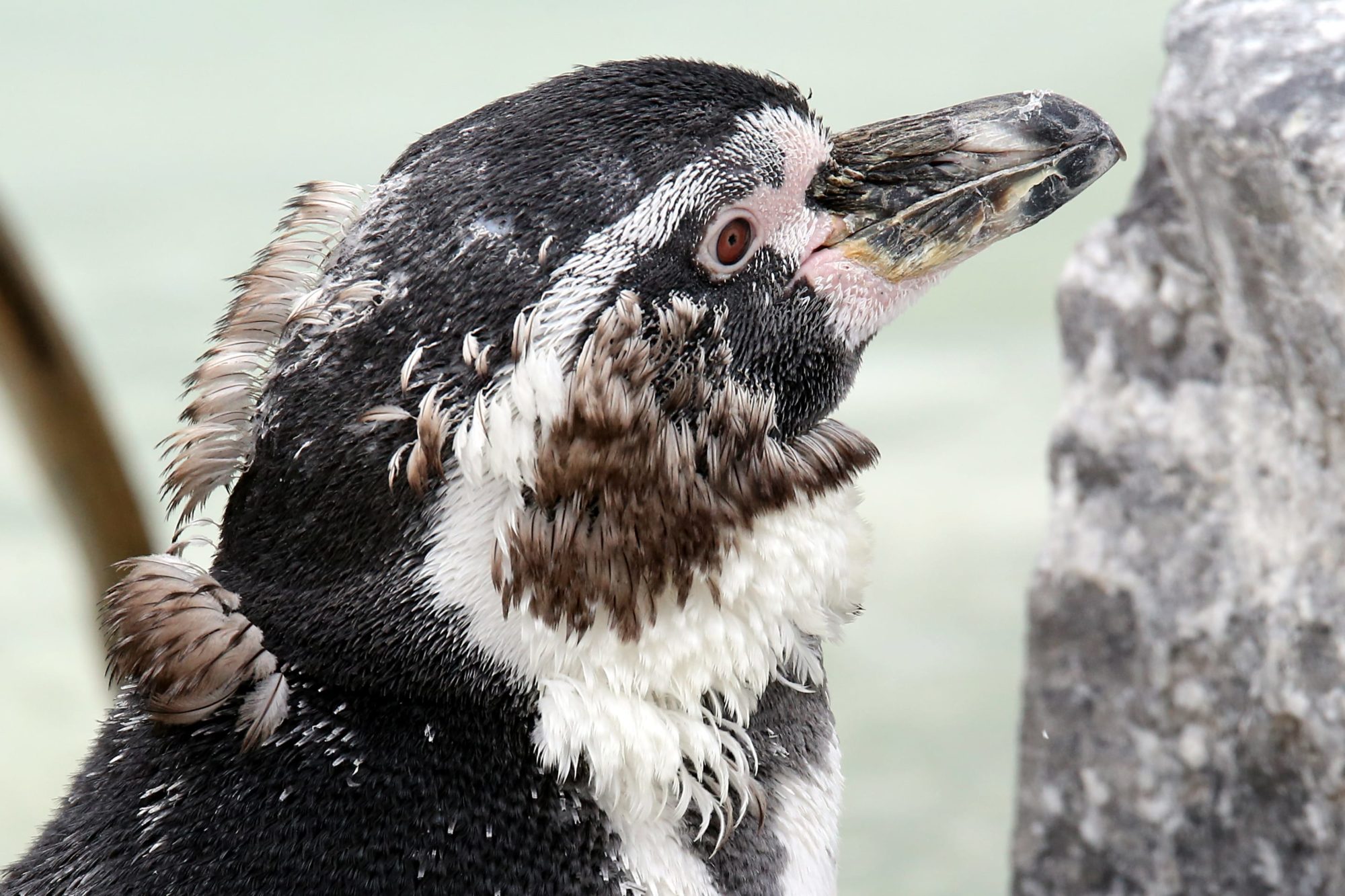
Learn more about our Humboldt penguins and our Macaroni penguins, including fun facts, watch their comedy antics on our live penguin cam now, or adopt a penguin with us. You can also feed our penguins on our unique penguin experience.
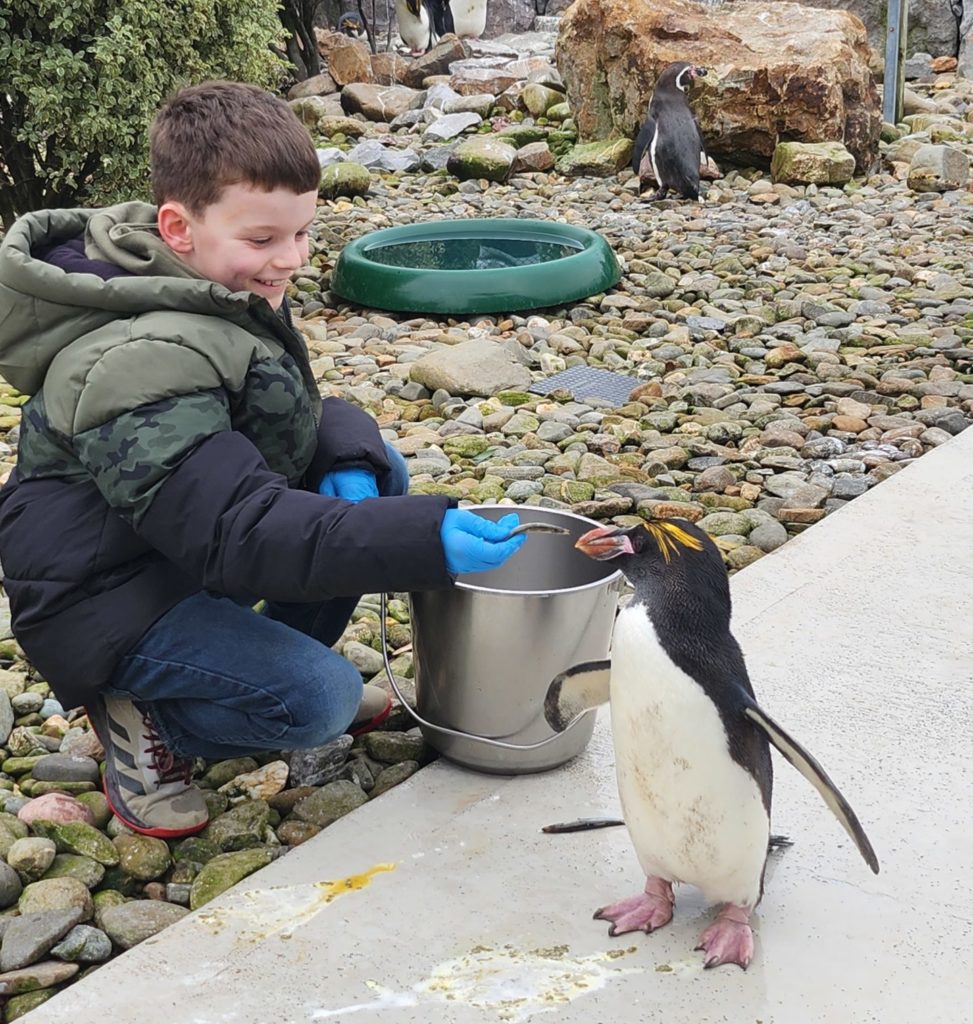
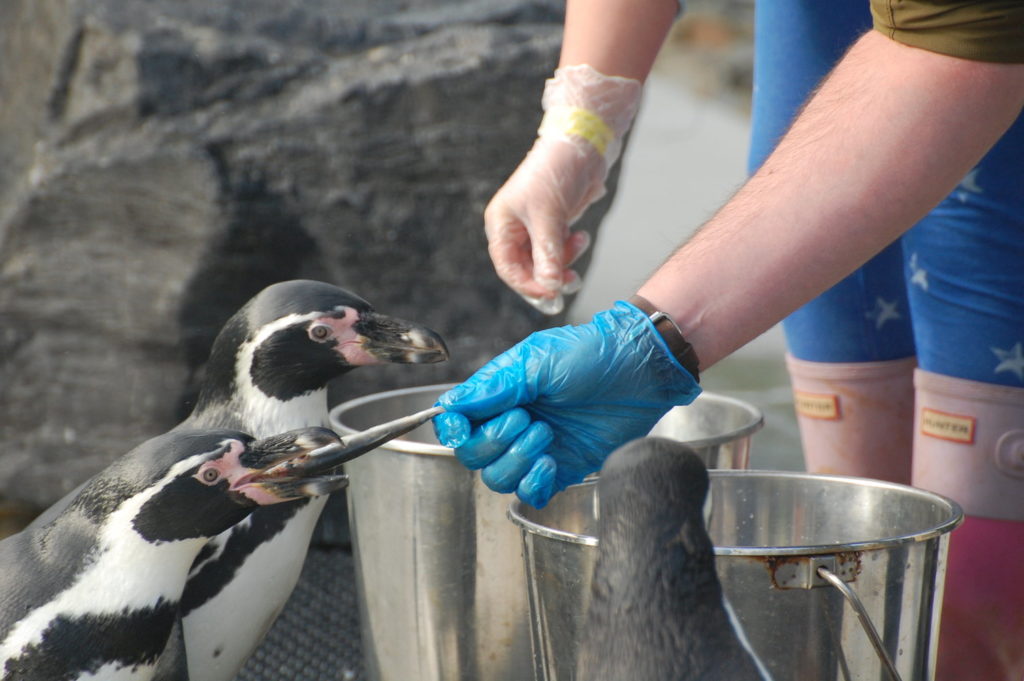
Get amongst our penguins and chat to the keepers that work with them with this p-p-perfect gift of a penguin feeding experience.
You can watch our Humboldt and Macaroni penguins waddle, swim and play on our live penguin webcam.